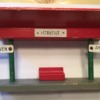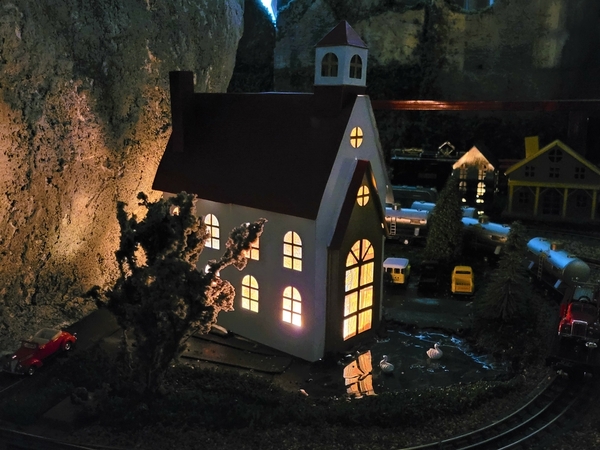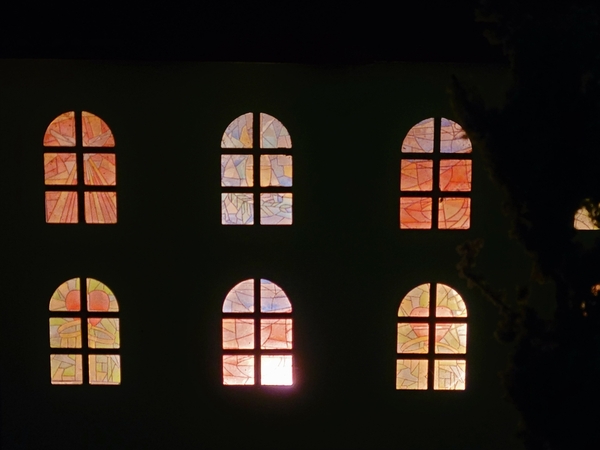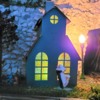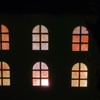OK, because I've come to learn that "Clockwork guys have a spring in their step", I dedicate this post to you Fatman!!!!
You all know by now I'm a dyed in the wool 3 rail electric Buco tinplate rail fan, but I must remember their humble beginnings back in 1947 when all that Bucherer Buco made were 2 rail clockwork locomotives, and a very small selection of tinplate 2 axle passenger carriages and freight wagons.
Not wishing to omit these poorer cousins from my collection, I have, over the years, obtained (some would say "stole") three (3) such examples of the clockwork variety. Now for everyone's viewing pleasure, I introduce my three neglected "212" clockwork loco's, and the sets that occupied the bright red cartons with the picture of a real Swiss train on the box.

The Buco clockwork train box set

The Buco label identifying what type of train set was in the box...in this case it is a P (passenger train) 212 (clockwork locomotive) /22 (2 passenger carriages # 8688, 8 sections of curved aluminium rail track, and 4 lengths of straight aluminium track). All track pieces came with a patented stainless steel joiner clamps to prevent the track from coming apart when in use.
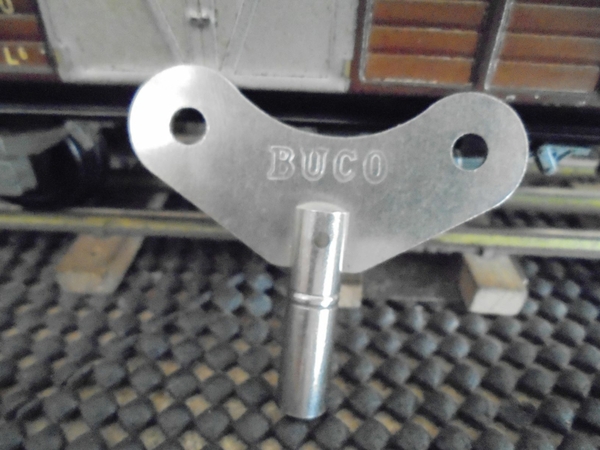
The obligatory Buco key to arm these little devils.

The three (3) different types of passenger train sets that were available/listed in their 1952 catalog. I will show you the set pictured at the top, but I have all of the other passenger and mail carriages listed with the other sets.
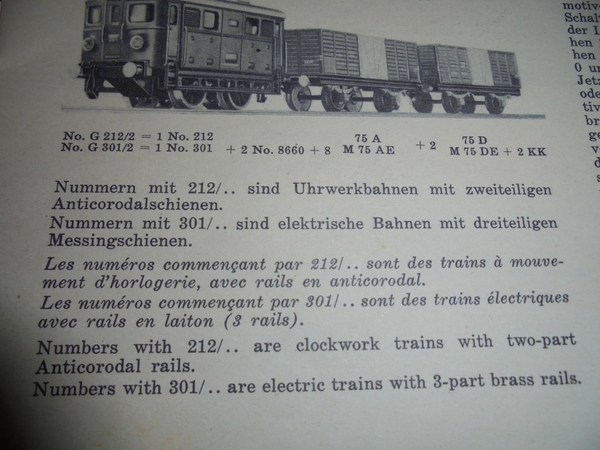
Here is the goods train that came in the above set - G (goods train) 212 (clockwork loco) /2 (2 short high-side gondolas # 8660, 8 sections of curved aluminium 2 rail track, and 2 lengths of straight aluminium track). This part of the catalog (the 1952 catalog is the only one that had an English translation, the others were always just in German and French) gives some insight to the numbers attached to the different loco's.
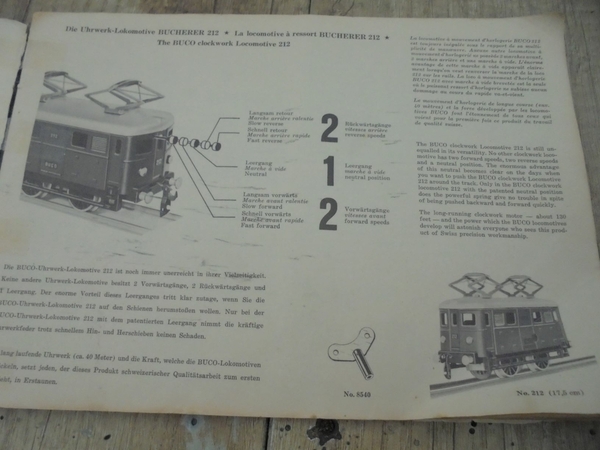
This page of the catalog explains the different gearing of the 212 clockwork loco. It has a low and high forward speed, a neutral position (to wind the key), and a low and high reverse speed, depending on how far you pulled the direction rod out. I get the "2-1-2" sequence, and how they used this system to number the clockwork loco, but I am stuffed if I know how they came up with the 301, 304, and right at the end of the production, the 314 numbers for the electric motor range. Another one of the mysteries of life!!!

My P212/12 train set - 1 clockwork loco and 2 short passenger carriages.
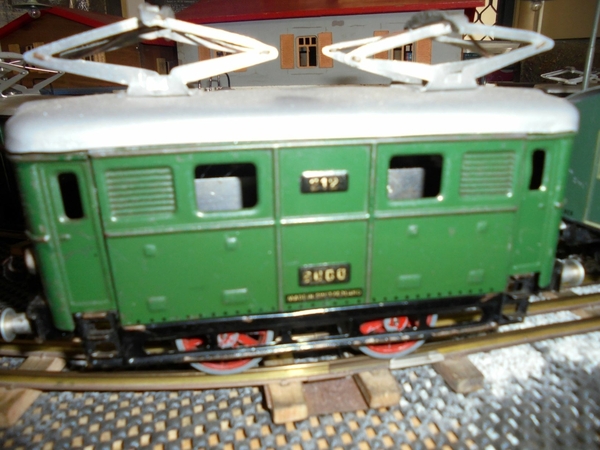
The 212 clockwork loco also provides the tinplate body and roof/pantographs for the 301 electric loco. The electric loco got working headlights (bulbs instead of chrome discs), chrome handrails to all four doors, and clear plastic strips fitted inside the body for window/windscreen glass. The direction rod is located at the rear on the electric loco, but is positioned at the front of the clockwork loco in all of their photos, probably to make it easier to activate the direction rod.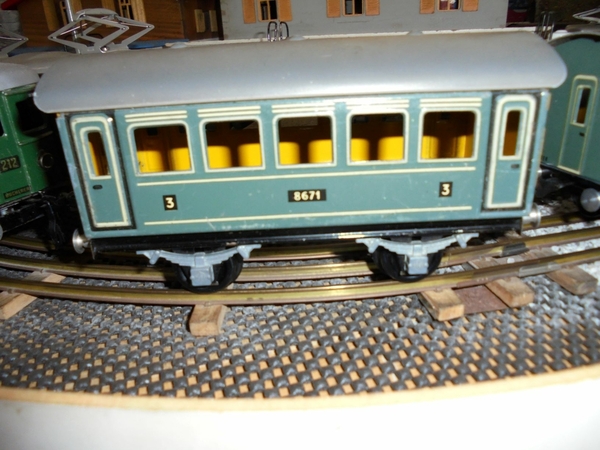
One of the short wheelbase 3rd class tinplate carriages that came in the set - carriage catalog No. 8671.

A peek inside my second clockwork loco, with the roof removed.

A peek from under the loco (albeit a little dark - sorry) of the drive gear, and how it only powers one axle, unlike the electric version that powers both axles.

This is the third clockwork loco train set I have - G 212/2 - with each of the colours (green and brown) the high-side gondola wagons were made in. These wagons are from the very first production in 1947/48 and have the "Type 1" couplers - they are becoming rare and collector items now. The drop link is very pro-typical and thin, and it is awkward to engage over the hook of the joining wagon.

The original thin "Type 1" drop-link coupler

The "Type 2" drop-link coupler that was fitted to the loco's and wagons/passenger carriages beginning around 1950. This coupler was easier to engage over the adjoining hook, and was also compatible with the Marklin (German) coupling used on their "O" gauge 3 rail trains. The Buco "hook" would slide into the Marklin coupling in the same way as the Marklin coupler did, so Buco and Marklin wagons and carriages could be used together in a consist.
Well, that's the second tutorial you lot have had to sit through, and I apologize yet again.
Footnote: Just to spice things up, I sometimes add a clockwork loco to the end of a freight consist, or double-head it with an electric loco. I just put the clockwork loco in "neutral" and it gets towed around giving the impression it is helping to push/pull the long freight train. Welcome to my fantasies!!!
Peter.....Buco Australia.
 Here's a photo of a mini-diorama on one of my SG shelves. It is a farm scene centered on a Threshing machine being driven by belt fromt he JD Model D on the right as a dealer delivery truck prepares to drop off a Waterloo boy Model N. Various Barclay/Maniol (?) figs engage in the work, such as forking wheat onto the chute of the machine, harvesting crops, sharpening the scythe, churning butter, and scaring crows
Here's a photo of a mini-diorama on one of my SG shelves. It is a farm scene centered on a Threshing machine being driven by belt fromt he JD Model D on the right as a dealer delivery truck prepares to drop off a Waterloo boy Model N. Various Barclay/Maniol (?) figs engage in the work, such as forking wheat onto the chute of the machine, harvesting crops, sharpening the scythe, churning butter, and scaring crows ![]()








